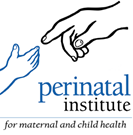


|

|



| E1 INTERGROWTH 21st |
The Perinatal Institute gets occasional enquiries about the INTERGROWTH 21st standards for birthweight and fetal weight. We advise against their use as they can cause harm, because they
Potential users in the UK ought to be aware that Intergrowth is based on data from 8 countries, with only about 15% from the UK. The other countries were Brazil, China, India, Italy, Kenya, Oman, and USA. Worrying evidence has been emerging about INTERGROWTH from researchers in these countries, even when comparisons were made with conventional, population based (i.e. un-customised) fetal or neonatal standards. Here are some examples, with link to publication and a key quote:
We are not aware of any published evidence that either the fetal weight or the birthweight standards by INTERGROWTH have shown any significant benefit in terms of identification of adverse pregnancy outcome. In contrast, GROW charts have been validated in a number of studies including a 2018 review in AJOG. We also keep an on-line, regularly updated list of studies with head-to-head comparisons between Intergrowth and customised GROW charts, none of which favour Intergrowth. A summary document (pdf) with an evidence based appraisal of INTERGROWTH vs GROW in the NHS is available here. A summary video (14 minutes) following a patient safety webinar in February 2023 is available here: Intergrowth and patient safety - Feb 2023.mp4 |
| E2 K2 / Athena Maternity System ‘Customised Charts’ |
| We have been asked by NHS users of K2 Maternity Systems to look at the charts incorporated by K2 into their Athena Maternity System, which they claim to be equivalent to the Perinatal Institute’s customised charts. Our GAP and statistical teams have undertaken an analysis of these charts. They have concluded that these charts cannot be recommended for clinical use as they are untested and unvalidated, and are likely to produce the wrong cut-offs for the identification of babies at risk, with potentially severe clinical consequences. For a detailed analysis, please see here. |
| E3 The Fetal Medicine Foundation (FMF) chart - https://doi.org/10.1002/uog.19073 |
This is proposed as a combined fetal and neonatal chart, on the same principle as GROW, namely that preterm births are not a normal population and the standard should be based on babies that are continuing growth in utero.
However the FMF charts do not take normal variation into account which makes them unsafe for use in the general UK population:
3. The mismatching fetal and neonatal standards cause a significant increase in false positive rates. An analysis of the GROW 2.0 dataset showed that at the 36-week scan, the FMF chart has a more than twice as high SGA false positive rate (6.6%) compared to GROW (2.9%). 4. The FMF neonatal standard does not adjust for newborn sex. This means males are less likely to be classified as SGA and females are more likely to be classified as SGA. 5. As is the case with all population-based standards, SGA rates decline with increasing maternal body mass index (BMI), hiding the increased SGA rate which is apparent with GROW and associated with the increasing stillbirth risk with elevated BMI2. This has recently also been demonstrated on the FMF chart3. References
|
| E4 We have implemented GROW and use customised centiles to assess whether the birthweight is SGA. However our neonatologists use the WHO standard to screen for SGA as a risk factor for hypoglycaemia. The two assessments are often out of sync. Which one should we use? |
| The UK-WHO standard, as used in the parent held Red Book for neonates, is an internationally derived population reference which does not adjust for individual constitutional factors that affect the normal range of birthweight, as recommended by the RCOG. The resultant discrepancies and confusion can have negative implications for parents, professionals and the quality of care. We examined the evidence and set out the argument for standardised assessment of birthweight in a paper which we submitted in May 2019 to the British Association of Perinatal Medicine (BAPM) with a request to review their recommendations. |
| E5 What standard for birthweight should be used for babies assessed in the Perinatal Mortality Review Tool (PMRT)? |
| MBRRACE have recently recommended the use of their TIMMS birthweight centile calculator based on the birthweight curves by Norris et al [1]. We examined this standard and advise against its use as 1. it is not customised, contrary to RCOG guidelines [2], and 2. it applies a neonatal (instead of fetal) weight standard to preterm births which results in substantial underestimation of SGA at preterm gestations. For further details please see our analysis here: https://bit.ly/2KV1fyM As a general rule, it is also important that the same standard is used to assess adverse outcome as that which was applied in antenatal care. For units using GROW for assessment of fetal growth and birthweight, the same standard should be used when assessing outcome. The birthweight centile can be either calculated postnatally in the GROW App, or with the customised centile calculator https://icc.growservice.org/754731/
|
| E6 Effectiveness of the GAP program in England and Scotland |
|
Stamatina Iliodromiti, Gordon Smith et al question the usefulness of the GAP program on the basis that stillbirth rates dropped in Scotland before GAP was introduced there: https://doi.org/10.1002/uog.21999
This is a good example of how statistics can be used to fit preconceptions. The research methodology is misleading in several ways. For example, the authors curtailed the period of study to exclude the years when Scottish stillbirth rates rose again, making the apparent decline statistically insignificant. They also did not present subsequent data which showed that stillbirths fell again after the GAP program had been introduced and had time to embed in Scotland. There were other flaws in methodology and conclusions which are detailed in our response: https://doi.org/10.1002/uog.22100 |
| E7 The DESIGN Trial |
|
The DESiGN study was a London based randomised controlled trial investigating the effectiveness of the GAP program in 5 NHS Trusts. The results have recently been published in PLOS Medicine and have been circulated with the headline that ‘GAP has had no effect on antenatal detection of SGA’. We believe that this conclusion is incorrect, and that the headline should instead reflect the most important finding of the study: the significant reduction in stillbirths in the GAP units in the trial - see our PLOS Medicine response. This is also the conclusion of Professor Lesley McCowan, one of the co-authors of the study, in her own published response, in which she estimates that this could translate to 400 fewer stillbirths a year in the UK. There were various problems with the study, any of which could explain why the authors found no improvement in SGA detection rates between the two study arms. These included that:
Additional comments about the trial have been posted on the same PLOS Medicine website: See also thread summarising our response to the DESiGN Trial on Twitter (@PerinatalUK). Recording of the lunchtime Lecture and Q&A about the Perinatal Institute’s response to the DESiGN Trial, held on 13 July 2022, is available here. |
| E8 French cluster RCT |
|
Serial plotting of symphysis–fundal height and estimated fetal weight to improve the antenatal detection of infants small for gestational age: A cluster randomised trial. Ego et al, 2023 https://doi.org/10.1111/1471-0528.17399 This cluster randomised trial from France was published recently with the conclusion that ‘serial plotting of SFH and EFW measurements on customised growth charts did not improve the antenatal detection of FGR among SGA births’. We will formally comment in relation to the external validity and relevance to the GAP programme. In the meantime, here are some preliminary observations:
Some of these points are similar to those we made in response to the DESIGN trial in London (see FAQ E6) and highlight the challenges of assessing antenatal growth surveillance programmes through RCTs, especially if there is limited compliance and/or a steady performance in the control arm cannot be achieved. In this regard, longitudinal studies assessing whether detection rates have improved following implementation are more informative and reliable. Two recent ones applying GROW charts and GAP principles, analysed independently but not referenced in the French RCT paper, are https://doi.org/10.1111/ajo.12902 and https://doi.org/10.1111/ajo.13283. |